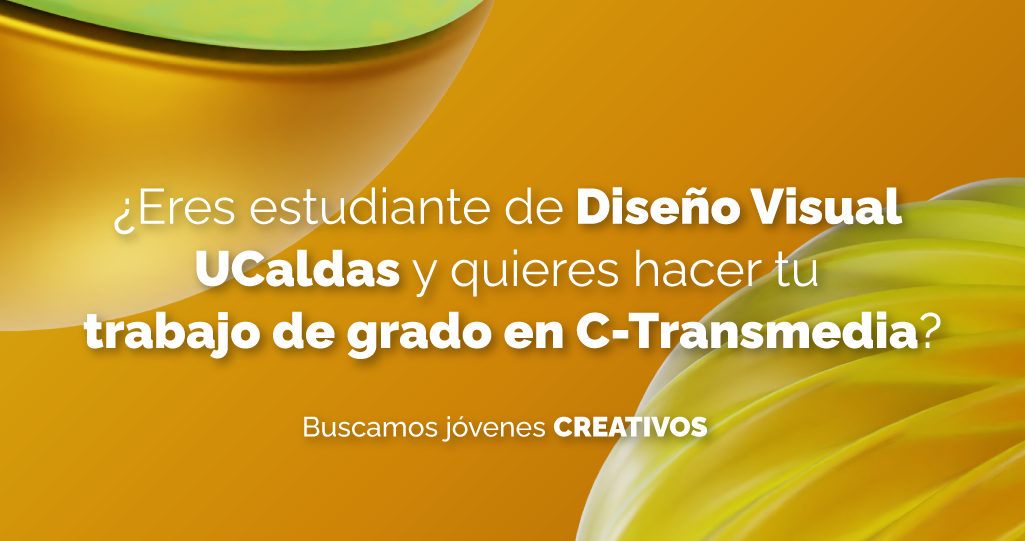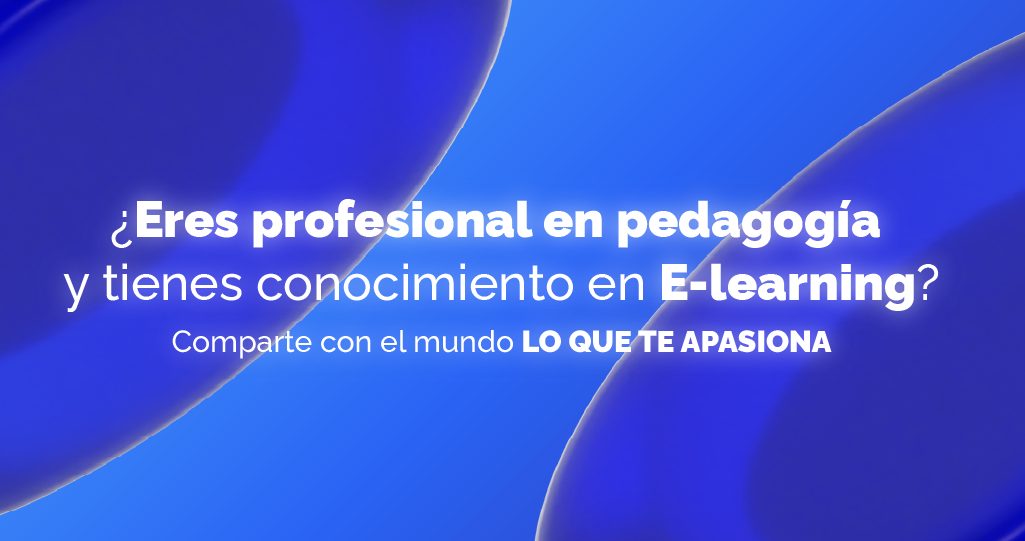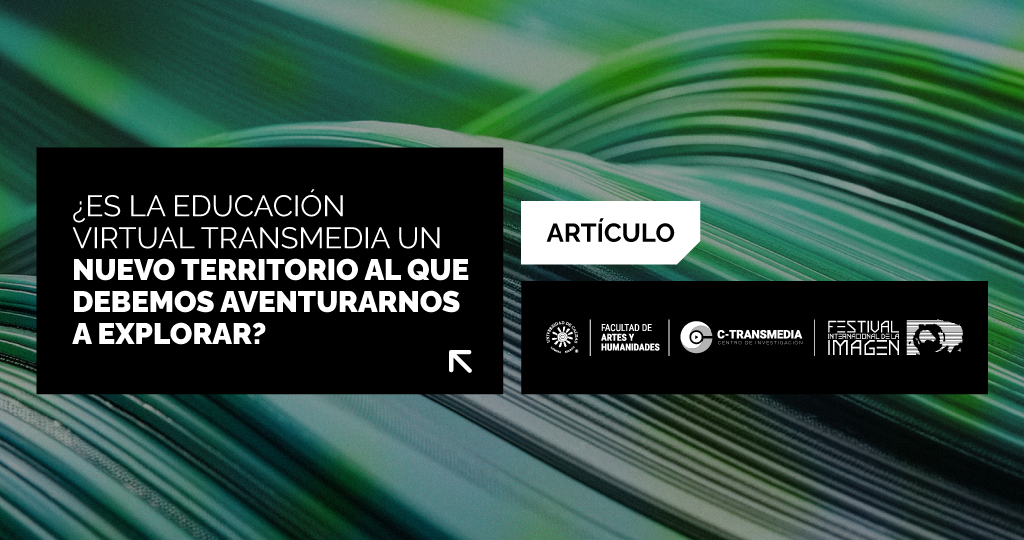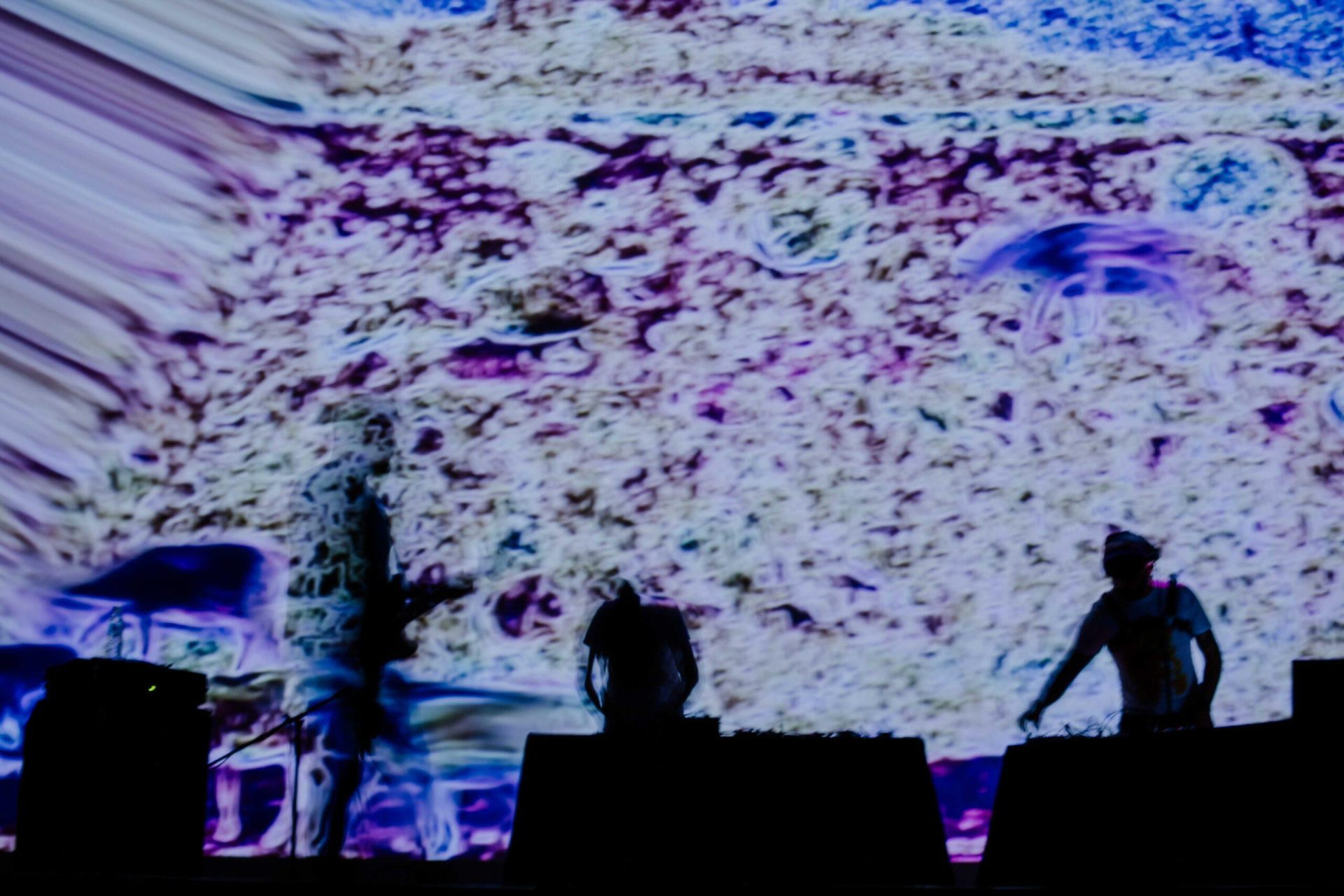
One to One: Memoria Expandida
One to One : Memoria Expandida
Daniel Ariza, artista e investigador: “La memoria del ser humano es frágil, por eso tenemos una civilización como la que tenemos, olvidamos muy fácilmente y no hemos tenido el hábito de conservar el material”.
Daniel Ariza no ha dejado de crear e investigar para las artes escénicas. Este 2023 será su año sabático, es decir, una temporada dedicada por completo a las artes escénicas. Y si queremos saber qué hará durante este tiempo, lo mejor es comenzar la entrevista preguntándole por su proyecto actual: Memoria Expandida.
A continuación, compartimos un fragmento del diálogo que C-Transmedia sostuvo con el actor e investigador Daniel Ariza, quien hace parte del grupo Teatro, Cultura y Sociedad y es docente de la Facultad de Artes y Humanidades de la Universidad de Caldas.
Andrea: Profesor., hablemos sobre la investigación-creación de este año sabático llamada Memoria Expandida. Cuéntenos un poco de qué se trata y cuál es el objetivo del proyecto.
Como nuestra línea es investigación-creación (del grupo Teatro, Cultura y Sociedad), estamos trabajando en Memoria Expandida, un proyecto que recopila trabajos escénicos vinculados a la tecnología, desarrollados entre 2009 y 2023 en la Universidad de Caldas.
Son 15 años de trabajo en los que hemos tenido acercamientos específicos al uso de la videoproyección en escena.
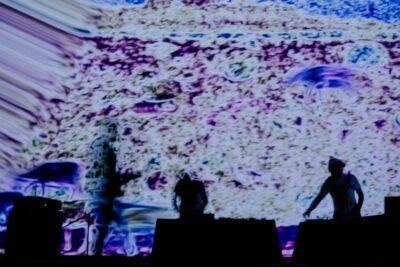
Videoproyección como complemento escénico. Los Ruidositos, ImagenFest, 2022.
Andrea: Creo que es muy significativo hablar sobre la inmersión de las nuevas tecnologías en el teatro, porque este proyecto, al tener como eje la memoria, puede derivar en subproyectos donde surjan otros tipos de realidades.
Además, esta primera parte se enfoca en la creación de una interfaz virtual, de fácil acceso, y en el trabajo de instalación.
Tuve la oportunidad de estar en Bogotá y ver 40 años de Mapa Teatro, y es interesante conocer cómo se construyó esa obra, entrar en esa intimidad. La idea de Memoria Expandida es que el público pueda ver, de manera inmersiva e interactiva, cómo ha sido el desarrollo de las obras.
Memoria Expandida tiene tres componentes: audiovisuales, pensamientos y voces.
En el momento en que empecé a pensar en cómo crear este archivo, la idea comenzó a madurar, y surgieron los audiovisuales porque para mí la escena se concibe como una máquina audiovisual de múltiples pantallas, con otros tipos de espacios, experiencias y manejo de la luz.
¿Qué pasa con las obras? Son el resultado de un pensamiento, de cómo hemos reflexionado; desde qué autores, desde qué estados del arte, y a eso lo llamo el capítulo de pensamientos, que se conecta, por supuesto, con lo que hemos escrito y divulgado.
Allí, el espectador podrá ver cómo se enlaza desde lo audiovisual hasta los artículos y capítulos de libros que hemos realizado, cómo hemos desarrollado nuevo conocimiento a partir de la creación.
Finalmente, estarían las voces, en dos sentidos: las críticas, realizadas por críticos y por el público que ha hablado sobre las obras y sus experiencias; y los programas donde hemos sido invitados a hablar sobre ellas. Son esas otras voces que han surgido alrededor del proceso creativo.
Estas tres secciones están interconectadas entre sí formando un rizoma, como raíces que conectan un punto con otro sin linealidad. Así, el público tiene diferentes rutas y alternativas para comprender cómo han sido las artes escénicas durante estos 15 años.
Andrea: ¿Por qué decidió vincular a C-Transmedia en un proyecto de cocreación?
En principio, un año sabático es un trabajo que se realiza en solitario, pero considero que el trabajo que debe hacerse en cualquier universidad es estar en contacto con la comunidad académica.
La creación de C-Transmedia ha sido fundamental para la Facultad. Fueron muchos años de trabajo intenso, pensando y repensando cómo lograrlo, y ahora que lo tenemos, la pregunta es: ¿cómo puede un proyecto formulado por un docente impactar en este centro de investigación?
Yo parto de un proyecto de investigación, se lo propongo a C-Transmedia porque necesito apoyo en la creación y el desarrollo, y ya hemos avanzado en el piloto de lo que podría ser el repositorio de artes escénicas de la Universidad de Caldas, que podríamos realizar en dos años.
Es un proyecto muy grande. Si solo con 14 obras nos toma un año, imagínese lo que sería con más docentes, más robusto, y con la gran cantidad de materiales de archivo por recopilar.
Ya estamos considerando un proyecto futuro para un repositorio que nos permita hablar de los primeros 20 años de producciones escénicas. Tal vez en 2024 podamos presentar la primera década, y en 2025, la segunda década de los proyectos realizados durante estos años.
Andrea: ¿Profesor, cuál sería el impacto en la sociedad?
La memoria humana es frágil, y el hecho de que este proyecto se haya creado desde el Eje Cafetero lo convierte en una memoria de las artes escénicas de la región. Es decir, las producciones de la Universidad de Caldas han tenido un gran impacto; nos invitan a festivales universitarios, nacionales e internacionales de teatro. Hemos desarrollado proyectos con recursos de la nación que impactan la región, y es importante para nosotros decir: sí, aquí existe un programa de artes escénicas que ha sido nutrido por jóvenes de Caldas y de otros territorios.
“Esto es importante porque también nos habla del ser humano, de cómo hemos construido nuestras vidas alrededor del teatro, la danza, la performance. Es un proyecto con un alto valor en términos de archivo, memoria y patrimonio de las artes escénicas en la región.”
Andrea: Profe, ¿cuándo podrá el público ver algo, o dónde?
Ya he avanzado en la recolección de información, que fue la etapa más compleja, porque antes decíamos: “yo recuerdo que tengo una nota de prensa, pero hay que buscarla”, y ver en qué estado está ese material, y si no, cómo acceder al original. Ir al Banco de la República y decir: “en La Patria, tal día, tal página, salió esto”, y tomarle una foto a ese material.
Luego vino la idea de decidir qué era audiovisual, qué era pensamiento y qué eran voces. Eso me tomó otro tiempo, y ahora estamos comenzando a visualizar el material. Ponernos de acuerdo en qué funciona y qué no en el diseño y hacer algunas pruebas.
En noviembre tendríamos una interfaz de trabajo, y me quedarían dos meses más para hacer ajustes. En febrero de 2024 ya podríamos dar luz verde para que el público tenga acceso.
Conoce más sobre Memoria Expandida: [enlace a la entrevista]
Redacción
Comunicaciones C-Transmedia
